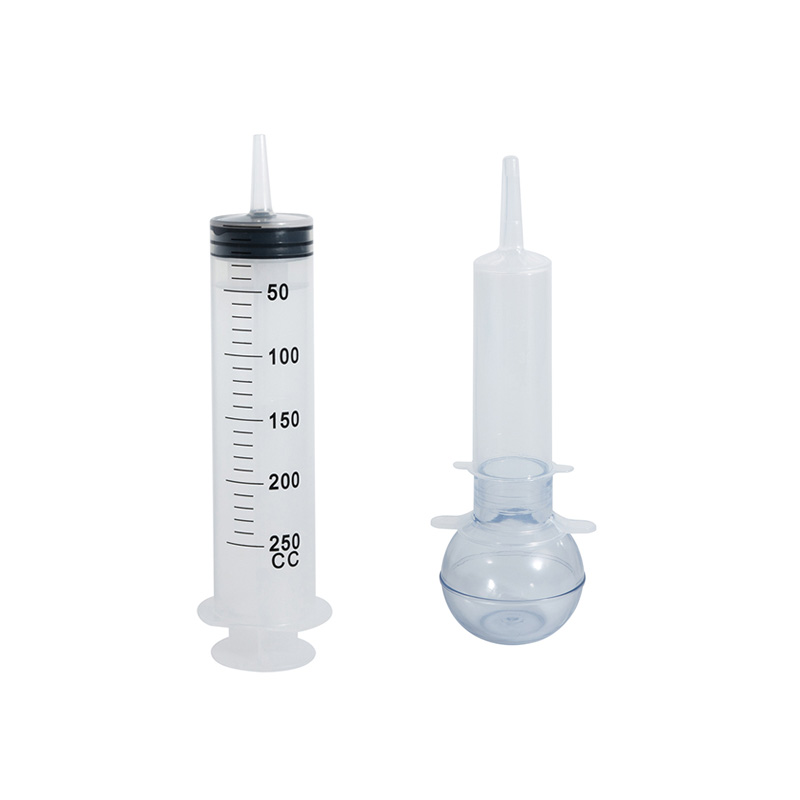How to Use an Irrigation Syringe Efficiently: A Complete Guide for Medical and Export Buyers
In the world of medical consumables, the irrigation syringe is a small yet indispensable tool. Used across hospitals, dental clinics, surgical settings, and home care, this device plays a critical role in cleaning wounds, flushing catheters, irrigating ears, and facilitating post-surgical care. If you’re a medical distributor, hospital procurement officer, or healthcare provider, understanding the effective use and selection of irrigation syringes can lead to better patient outcomes—and smarter purchasing decisions.
In this article, we’ll explain how to use an irrigation syringe efficiently, review the different irrigation syringe types, discuss common applications, compare sizes, and provide practical guidance for bulk buyers and international importers.
What is an Irrigation Syringe?
An irrigation syringe is a medical tool designed to flush fluids into or out of body cavities. It consists of a barrel and plunger, often with a specially designed tip (such as a bulb or catheter tip) for specific uses. Unlike standard syringes used for injection, irrigation syringes are usually larger in volume and are designed for gentle yet effective pressure control.
Common Irrigation Syringe Applications
Irrigation syringes are widely used in the following areas:
Wound Care: To remove debris, bacteria, or exudate from wounds.
Surgical Procedures: For flushing surgical areas with sterile saline or antiseptic.
Ear Irrigation: To remove earwax or treat ear infections.
Dental Use: Post-extraction irrigation to maintain oral hygiene.
Catheter Irrigation: To keep catheters clear and reduce infection risks.
Enemas or Gastrointestinal Procedures: To introduce or remove fluids gently.
Each application may require a different type or size of syringe, depending on the volume and flow needed.
Types of Irrigation Syringes
Selecting the right irrigation syringe type is crucial for both functionality and patient safety. Here are the most common types:
Bulb Syringe
- Features a soft rubber bulb that’s squeezed to create suction.
- Ideal for ear, nose, and gentle infant use.
- Easy to handle, especially in home care settings.
Piston Syringe (with Plunger)
- Offers better control of flow and pressure.
- Used for wound irrigation and surgical flushing.
- Often includes a catheter tip for deep irrigation.
Toomey Syringe
- A larger piston-type syringe (often 60ml or more).
- Commonly used in urology or post-operative care.
Irrigation Syringes with Curved Tip
- Designed for dental and oral use.
- The curved tip helps reach difficult areas in the mouth after surgery.
Irrigation Syringe Sizes and When to Use Them
Irrigation syringe sizes vary from small 10ml options to larger 100ml capacities. The most commonly used sizes include:
10ml – 20ml: Dental and pediatric applications.
30ml – 60ml: Wound care, catheter irrigation, and post-surgical flushing.
100ml or more: Surgical and gastrointestinal applications.
Choosing the correct size ensures that the fluid volume is appropriate for the procedure, which can significantly affect efficiency and comfort.
How to Use an Irrigation Syringe Efficiently
If you’re wondering how to use an irrigation syringe efficiently, consider these expert tips:
1. Choose the Right Syringe Type and Tip
- Use a catheter tip for wound care.
- Use a bulb syringe for ears and nasal applications.
- Use a curved tip for oral or dental irrigation.
2. Use Sterile Fluids and Maintain Hygiene
- Always use sterile saline or prescribed fluids.
- Dispose of single-use syringes immediately after use.
- Reusable syringes should be sterilized properly.
3. Control the Flow
- Use steady pressure to avoid tissue damage.
- Avoid excessive force which may cause discomfort or complications.
4. Position the Patient Correctly
- Proper positioning helps drainage and increases efficiency.
- For wound or dental irrigation, gravity can assist fluid removal.
5. Train Staff or Caregivers
- Ensure those using the syringe are trained in technique.
- Demonstrate correct filling, angling, and plunger use.
Why Quality Irrigation Syringes Matter for Buyers
For bulk purchasers and medical supply importers, the quality of an irrigation syringe directly impacts clinical outcomes and brand reputation.
Here’s what to look for when sourcing:
FDA or CE Certification
Latex-Free and BPA-Free Materials
Clear Volume Markings
Individually Sterile Packaging
Variety of Sizes and Tips Available
Partnering with a reliable manufacturer that provides OEM and ODM services can also help you meet diverse market demands.
Final Thoughts
The irrigation syringe may be a simple device, but its role in medical care is far-reaching. From wound cleaning to post-operative recovery, it enables safe, effective fluid delivery. Whether you’re sourcing for a hospital, clinic, or export business, understanding the types, applications, sizes, and proper usage techniques of irrigation syringes will help you make informed decisions and provide better value to your clients.
If you are looking for high-quality irrigation syringes at competitive wholesale prices, our company offers a full range of products designed for safety, efficiency, and international compliance. Contact us today to request samples or a quote.
Post time: May-26-2025








